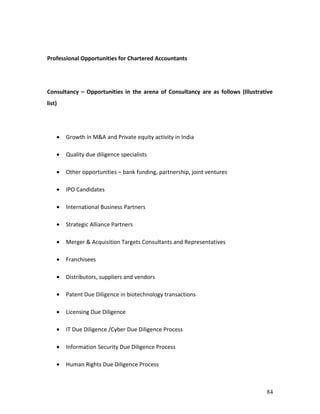This document provides an overview of the history and evolution of internal auditing. It discusses how internal auditing began in the 1940s when companies appointed internal auditors to review operations and report to management due to difficulties maintaining control during World War II. It then evolved from voluntary audits to becoming mandatory with increased regulations. The document outlines the historical periods of auditing development and discusses how the industrial revolution and growth of corporations led to a need for more formal accounting practices and professional standards to protect investors.

![“ In case a discrepancy is discovered during audit:
- the official concerned shall pay a penalty if the discrepancy has the effect of either
showing a higher actual income of lower actual expenditure [ in both the state being a
loser]
- the official shall keep the difference for himself in the converse case.[where a lesser
amount than the one shown by the official is actually due to the state]”
- from Kautilya’s Arthasastra {from 2.7.19,20}
Internal Audit began in modest manner during the Second World War when organisations
found it difficult to maintain operational efficiency and control. Companies appointed
special staff (i.e. present day internal auditors) to review operations and report to them
.The task assigned to internal auditors varied from routine check on finance and
operations to appraisal of financial & operational activities.
Earlier, internal audit was largely voluntary, management appointed internal auditors
when they felt the need. With increased complexities in business, frauds and scams
internal audit has become essential for most organisations. Be it SEC in United States or
SEBI in India, regulators are prescribing mandatory internal audits. The range of
activities undertaken by internal audit teams has increased. They cover a whole gamut
of operations ranging from review of finance & operations to providing assurance and
consulting services.
The history of auditing provides the basis for analyzing the changes that have taken
place in the audit objectives and techniques. A significant recent trend is towards
increased reliance on internal controls and a decrease in detailed testing. The futuristic
auditing process is said to be more of a procedural review together with the analysis of
the effectiveness of internal controls, thereby offering a platform for the procedural
appraisal of the system in place. Various factors contribute to this development. Rising
cost of public accounting, expectations of the users of the financial statements,
2](https://image.slidesharecdn.com/article-internalaudit-130309104739-phpapp02/85/Article-internal-audit-2-320.jpg)






























































































![The present Legal and procedural framework relating to Corporate Insolvency apart
from several other special provisions like debt recovery laws, is laid out by 4 major
legislations, namely:
• The Companies Act 1956
• The Companies (Second Amendment) Act, 2002
• Sick Industrial Companies (Special Provisions) Act, 1985 [SICA]
• Securitisation and Reconstruction of Financial Assets and Enforcement of
Security Interest Act (SARFAESI) Act, 2002 also known as the Securitization Act
• Recovery of Debts due to Banks and Financial Institutions Act, 1993 (RDB Act)
[Debt Recovery Tribunals set up under this Act]
9. Securitization Laws
Securitisation is the process of pooling and repackaging of homogenous illiquid financial
assets into marketable securities that can be sold to investors. Securitisation has
emerged as an important means of financing in recent times. A typical securitisation
transaction consists of the following steps:
• Creation of a special purpose vehicle to hold the financial assets underlying the
securities;
• Sale of the financial assets by the originator or holder of the assets to the
special purpose vehicle (SPV), which will hold the assets and realize the assets
• Issuance of securities by the SPV, to investors, against the financial assets held
by it.
Securitisation Law
97](https://image.slidesharecdn.com/article-internalaudit-130309104739-phpapp02/85/Article-internal-audit-97-320.jpg)




































